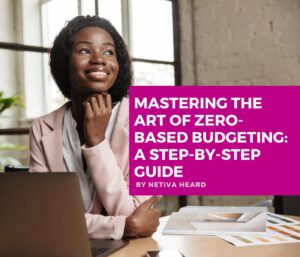Whether you’re buying a car, taking out a mortgage, or applying for a personal loan, your potential lenders are going to use your creditworthiness to help determine whether you qualify for the loan.
Your creditworthiness is a combination of the history of on-time payments, number of accounts, and mix of credit (credit cards, mortgages, installment loans, etc.), length of credit history, among other factors.
If you do not have many accounts or your credit history is short, you may be considered to have a “thin credit profile”.
A thin credit profile can negatively impact your ability to secure credit cards and loans at the most favorable terms and/or rates.
In this article, we’ll look at what a thin credit profile is and ways to improve your credit standing.
What is a Thin Credit Profile?
A thin credit profile is generally considered to be one which has four or less credit accounts or history of six months or less.
There are a number of factors which might contribute to you having a thin credit profile, including:
- Having credit accounts that you have not actively used
- You haven’t used credit for a number of years
- You were recently divorced or widowed
- You typically use cash rather than credit
A thin credit profile is different from having a bad credit score. With a thin credit profile, lenders do not have enough information about your creditworthiness to make a lending decision which can negatively impact your access to capital.
You may be denied credit or receive higher interest rates than someone with a more robust profile.
There are a number of things that you can do to improve your credit history.
(1) Apply for a secured credit card
A secured card allows you to make a deposit with your credit card company, which then becomes your credit limit.
You may then use your credit card in the same way you would use an unsecured credit card.
A secured card card typically has more flexible credit requirements than their unsecured credit card counterparts making it a viable solution for someone looking to establish their credit profile.
Actively using a credit card like this each month and continually making on-time payments allows you to improve your on-time payment history and length of history helping you to improve your credit score.
(2) Apply for a starter credit card
A starter credit card such as a merchant account credit card or a retail store account can be another good option for those seeking to build their credit profile.
Similar to secured credit cards, starter credit cards typically have more flexible terms than other types of credit cards.
In addition to making on-time payments, it is important to utilize no more than 0% of your total credit limit during any given statement period (although less than 10% is more ideal). This means that 30% of your credit limit balance should be reported as the balance owed during any given month. Your utilization ratio, or the amount owed on your credit account vs. the total credit limit is an important factor in calculating your credit score.
If you believe you will be using your credit card frequently or have a low credit limit, you can avoid a high utilization ratio by making multiple payments during the statement period.
(3) Become an authorized user on someone else's account
Many credit card companies allow their cardholders to name authorized users to their account. This means that the authorized user would be able to use the account similarly to the original account holder.
The advantage here, is that when the credit card account is reported to the three credit bureaus (Experian, Transunion, and Equifax), you receive the benefit of the original cardholder’s payment history on your account. For example, if the credit card has been open for ten years with a 100% on-time payment history, this information will also be reported on your account, even if you have only recently been added as an authorized user.
This can help to provide an instant upgrade to your credit report.
On the downside, any negative credit information reported on the cardholder’s account will also negatively impact your credit report.
You’ll want to ensure that you have a trusting relationship with the cardholder should you choose to go this route.
(4) Take out a credit builder loan
A credit builder loan is another potentially great way to help to build your credit profile. The way that a credit builder loan works is that the financial institution “lends” you a specified amount of money. As payments are made, the lender takes those funds and deposits them into an account for the specified term. As you make your monthly payments, the lender reports your good payment history to the credit bureaus. At the end of the term, the funds you deposited are returned to you.
The lender will typically charge a fee or interest rate for use of this service.
The upside is that you can quickly establish or re-establish your credit history with this type of account.
The downside is the fees or interest rate charged on the money that you deposit.
(5) Look for other positive payment accounts
Outside of traditional credit lines such as mortgages, credit cards, personal loans, and student loans, you may be able to add other non-traditional accounts in order to establish your creditworthiness.
If you rent your home, ask your landlord for assistance in reporting your monthly rental payments.
If that is not an option, payment services can help you to achieve this.
Final Word: Take It Slow
You may feel that opening numerous credit accounts quickly will help fatten your credit profile. While this may be the case, opening too many accounts too quickly can also have a negative impact on your credit score.
Each time you make an application for a line of credit, an inquiry is reported to the credit bureaus. Too many inquiries in a short time span can reduce your credit score.
In addition, potential lenders may view numerous accounts at the same time as a red flag. Only open accounts that you may need to use immediately.
Building your credit can sometimes feel like a Catch-22. You need a solid credit history to b e able to access credit cards and loans, however, you cannot build a solid credit history without opening these accounts.
Use these tips to help you to build your credit file and secure your financial future.
If you have any questions regarding the best ways to improve a thin credit file or you would like to learn more about our services, please post them inside of our free online community Credit Makes $ense!
Need 1-on-1 Assistance? Feel free to schedule a Personal Credit Consultation here 😊.










One Response
This is great advice and information. And motivation for me to simply stay the course. Rome wasn’t built in a day 🙂 -Thank you